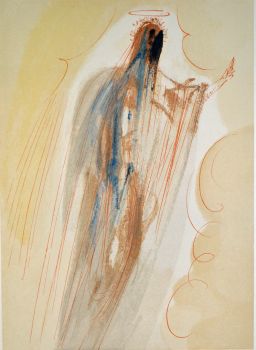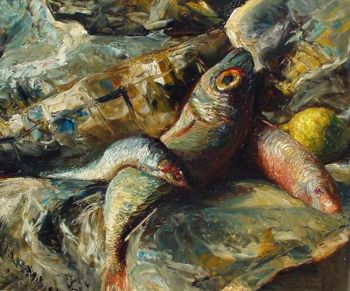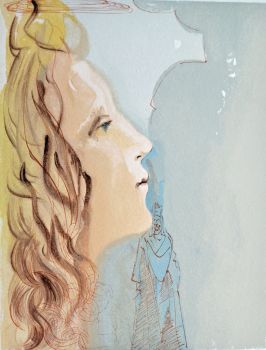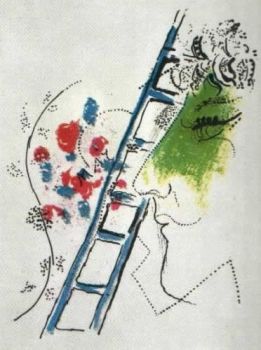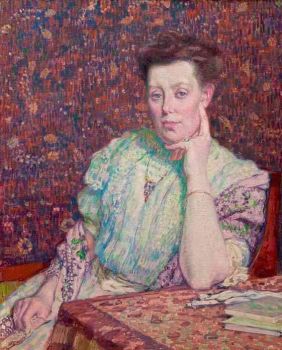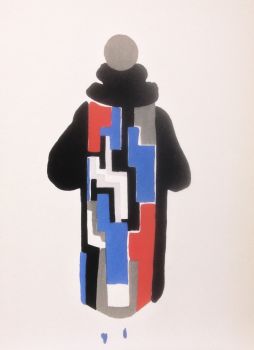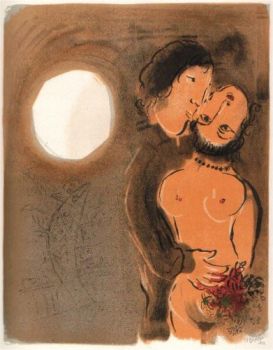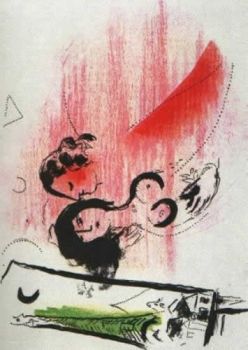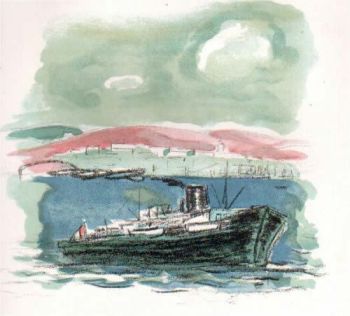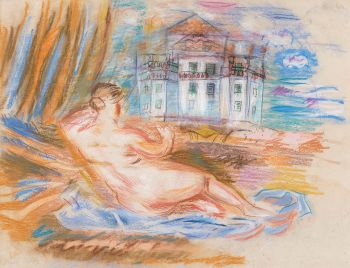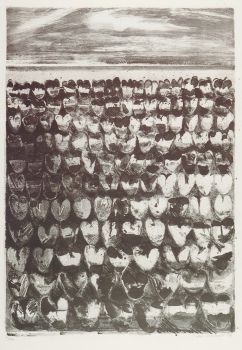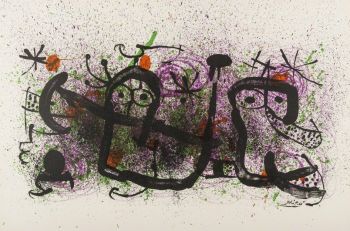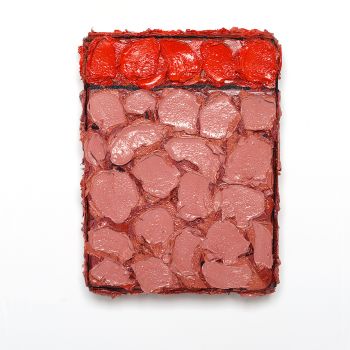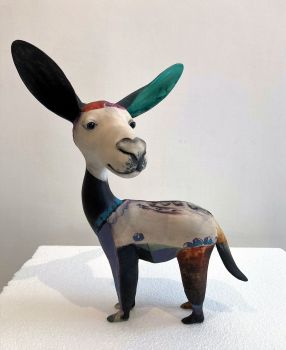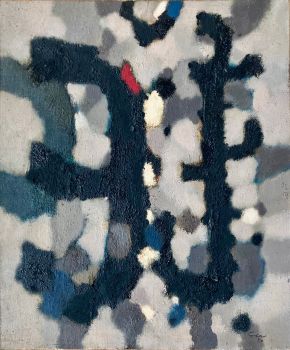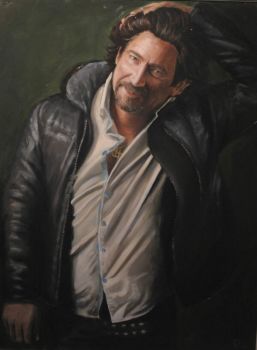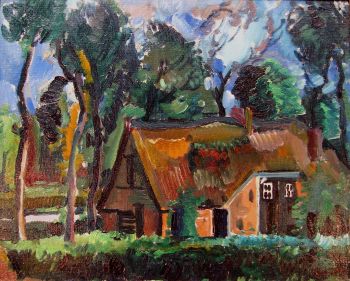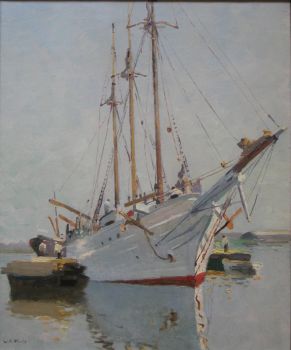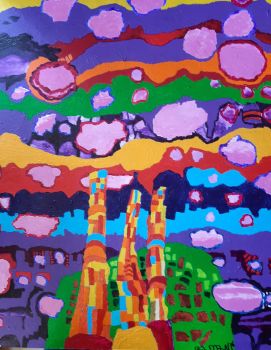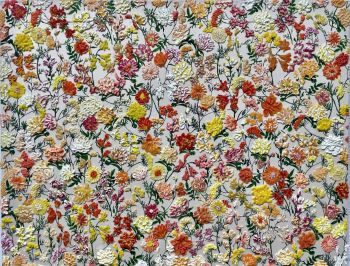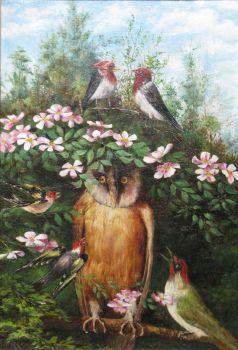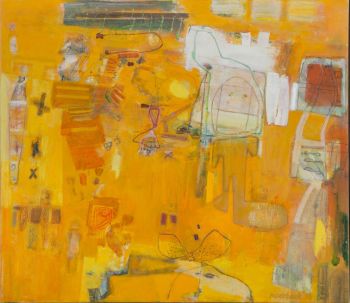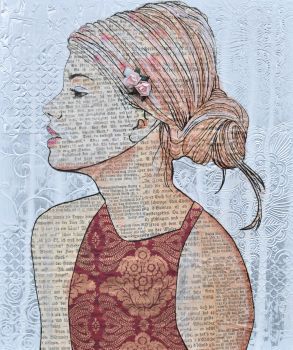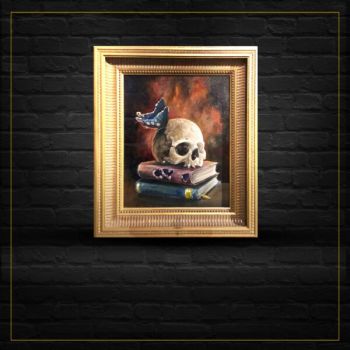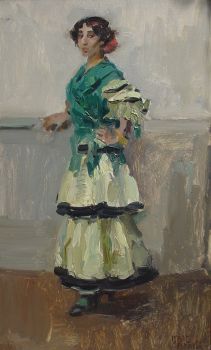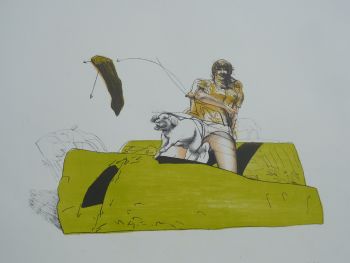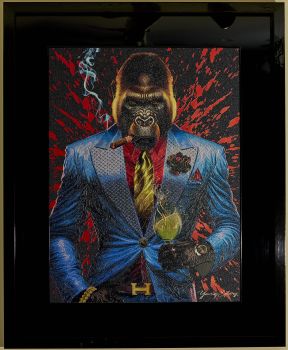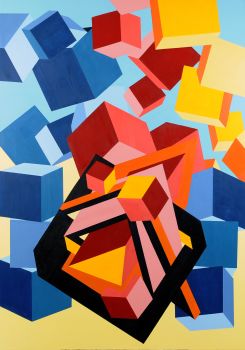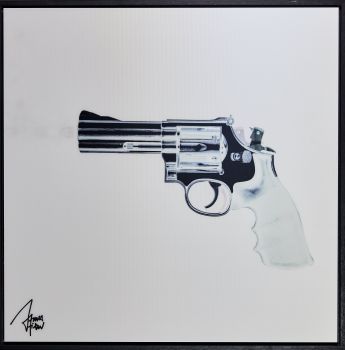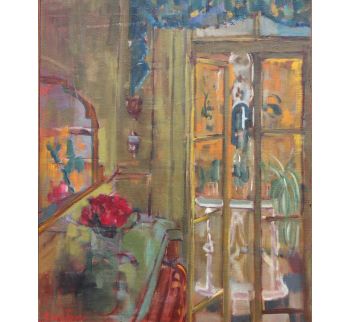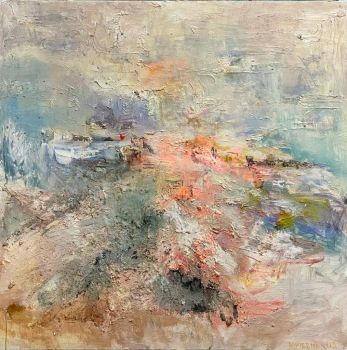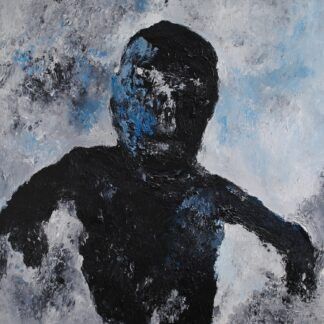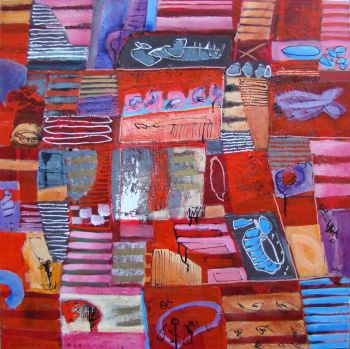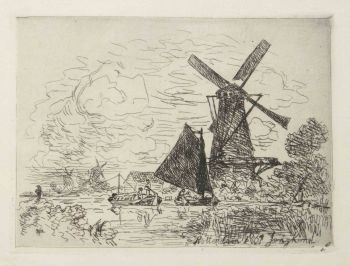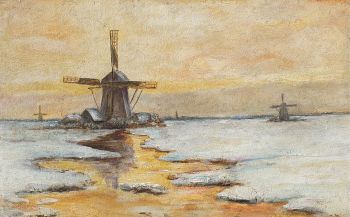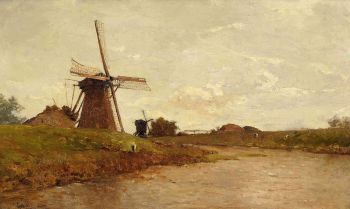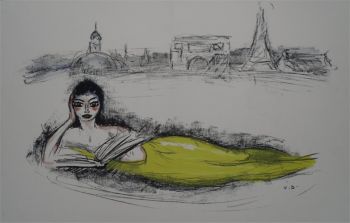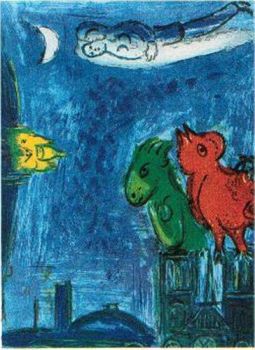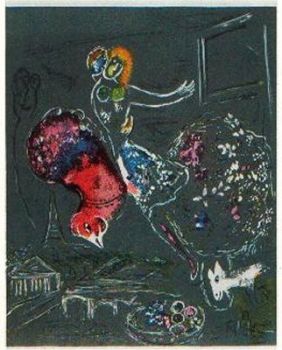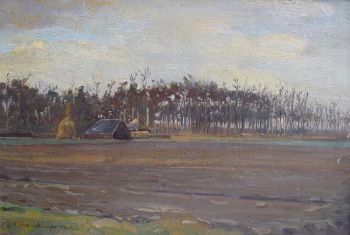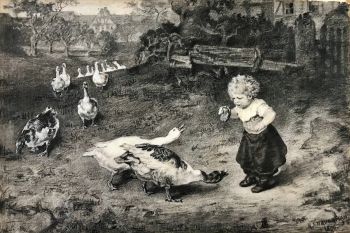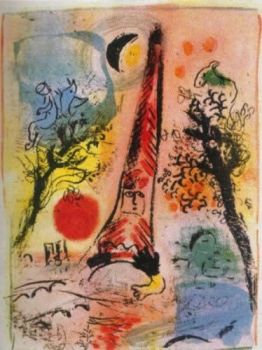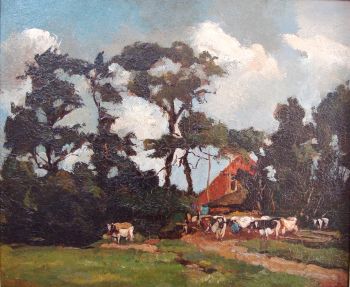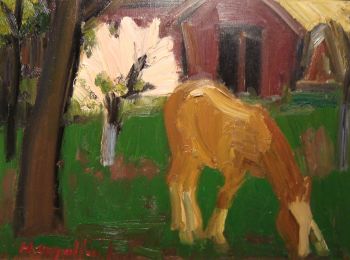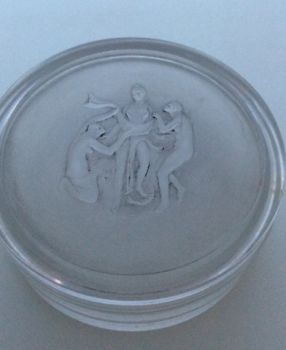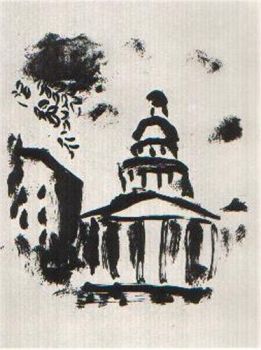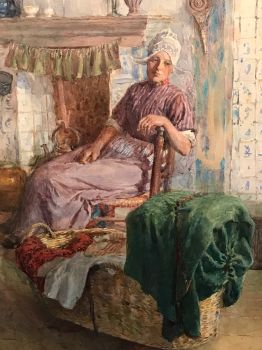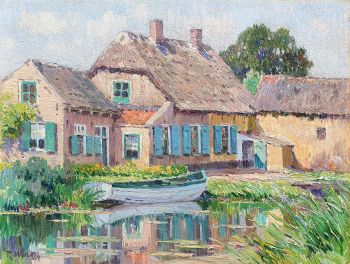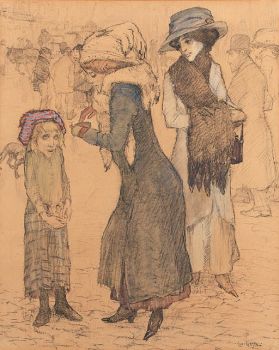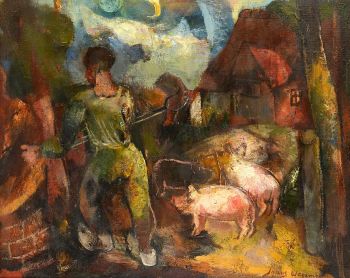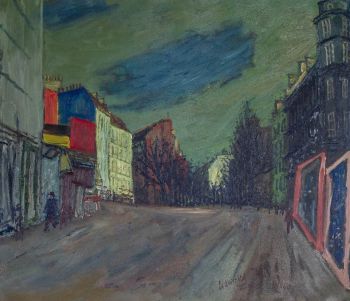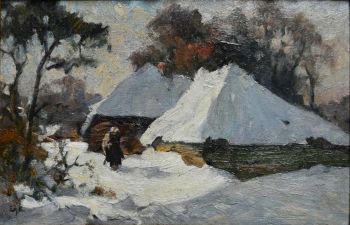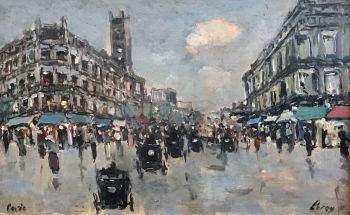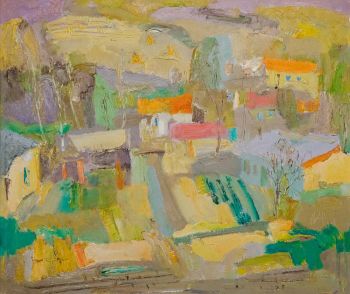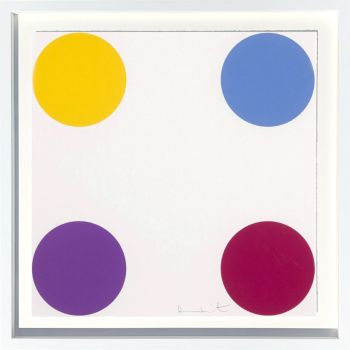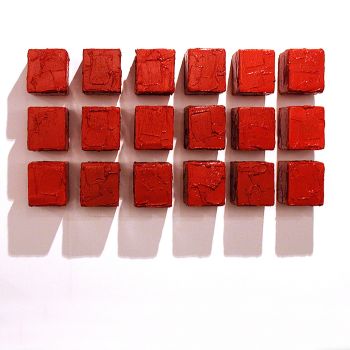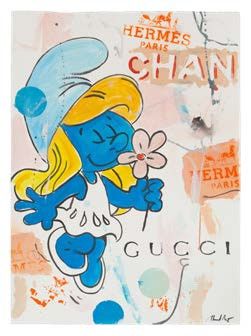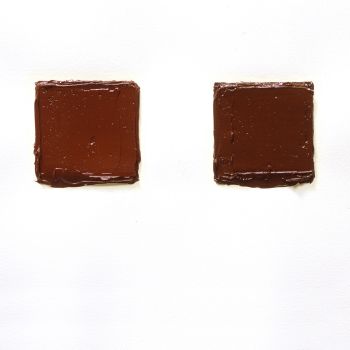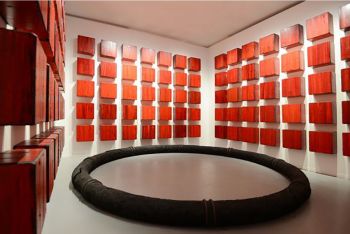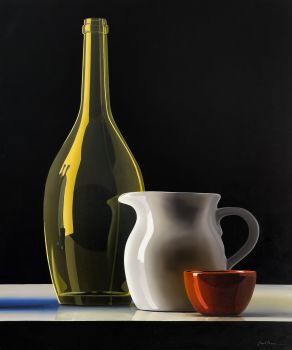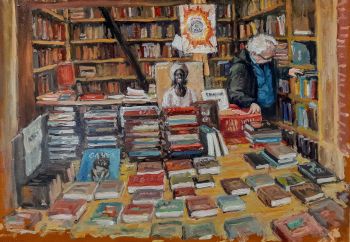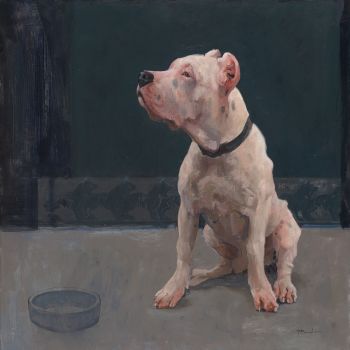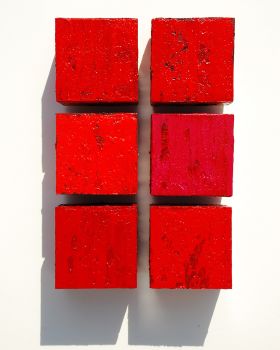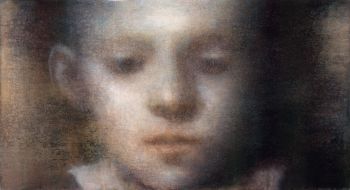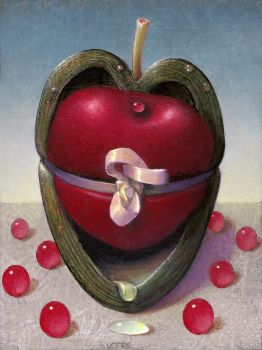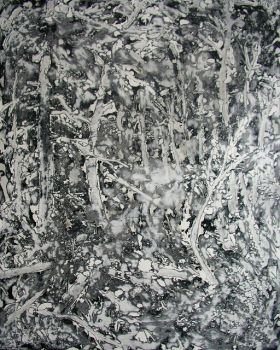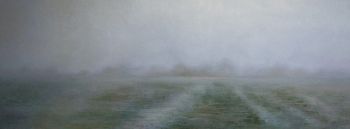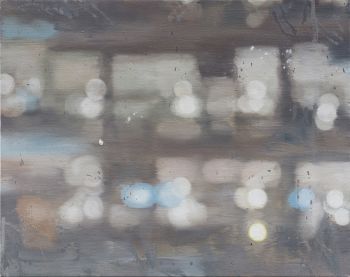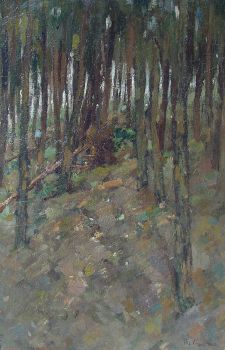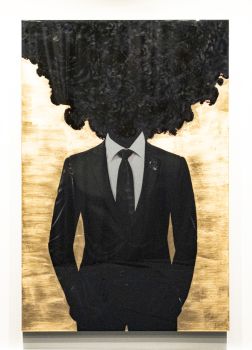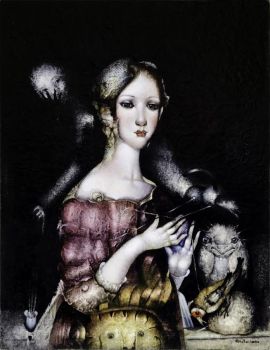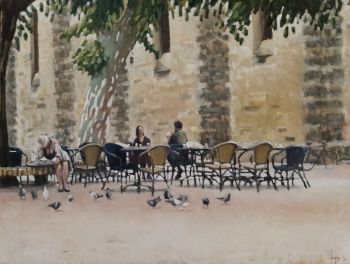Le Moulin de la Galette 1921
Jean Dufy
TelaPittura a olioDipingere
50 ⨯ 61 cm
Attualmente non disponibile tramite Gallerease
- A proposito di opere d'arteJean Dufy 1888-1964)
Jean Dufy was a French painter of Parisian society, country scenes, circuses, horse races, stages, and orchestras. He was born in Le Havre, on March 12, 1888 into a large family. His older brother was the well-known painter Raoul Dufy, who became a mentor throughout Jean’s career. Jean Dufy had received formal education at the École Primaire Supérieure du Havre. In 1920 Dufy settled in the artist quarter Montmartre, next door to Georges Braque. Braque, a friend of his brother Raoul Dufy, encouraged him to experiment with the Cubist style. Another of Raoul's friends, Othon Friesz, exposed him to the Fauve movement. He also spent time there with Picasso, Apollinaire, and Derain, among others. After settling in Montmartre, Dufy participated in many exhibitions which reflected the music and art of Parisian culture after the war. Dufy created colorful paintings of circuses and clowns, as well as Parisian street scenes including horse-drawn carriages, the gates of Paris, the Eiffel Tower, and the bridges of the Seine.
Provenance: Collections: Max Bodner, New York NY, US; Edith T. and Samuel E. Gilbert, Philadelphie PA, US; Dutch private collection
Literature: Jean Dufy Catalogue raisonné de l’oeuvre Volume II - Jacques Bailly – page 220 Paris – Montmartre No B.1101 - A proposito di opere artistaJean Dufy (Le Havre, 1888 – Boussay, 1964) è stato un pittore francese della società parigina, scene di campagna, circhi, corse di cavalli, palcoscenici e orchestre. Dufy è nato a Le Havre nel 1888. Suo fratello maggiore, Raoul, aveva dieci anni più di Jean e, quando Jean si stava formando all'École des Beaux-Arts di Le Havre, Raoul era già un noto artista che lavorava a Parigi. Jean seguì suo fratello nella capitale nel 1912, dove Raoul lo prese sotto la sua ala protettrice, presentandolo alla sua cerchia di amici post-impressionisti tra cui Derain, Braque e Picasso. Nel 1914 fu organizzata la sua prima mostra, ma fu solo dopo la prima guerra mondiale, quando visse a Montmartre, che emerse la caratteristica vivacità della sua tavolozza e della sua pennellata con le sue rappresentazioni iconiche di musicisti e orchestre come Musical Fantasia (1927) , e i suoi successivi paesaggi urbani parigini come Rue Royale (c. 1950) e Ile de la Cité (c. 1953-55). Il suo design in porcellana, Chateaux de France, vinse una medaglia d'oro all'Esposizione internazionale di arti decorative nel 1925. Dufy sarebbe tornato nella natia Normandia fino alla fine della sua vita e avrebbe trascorso periodi nel sud della Francia. Da giovane aveva servito a bordo del transatlantico La Savoie come segretario, e le sue raffigurazioni del mare e dei porti in opere come Terrasse Fleurie a Villefranche-sur-Mer (1926) sono tra le sue migliori opere.
Artwork details
Categoria
Soggetto
Stile
Materiale e Tecnica
Colore
Related artworks
Conrad Kickert
Still life with fish in a newspaper1900 - 1965
Prezzo su richiestaKunsthandel Pygmalion
1 - 4 / 24- 1 - 4 / 24
René Lalique
Una rara scatola per Nina Ricci circa 19371937
Prezzo su richiestaLennart Booij Fine Art and Rare Items
1 - 4 / 24Rene Rietmeyer
"Germany, Saarland, April 2001"2001
Prezzo su richiestaEuropean Cultural Centre Collection
Eduard Charlemont
‘Allegories of Africa and America’1872
Prezzo su richiestaZebregs & Röell - Fine Art - Antiques
1 - 4 / 24


